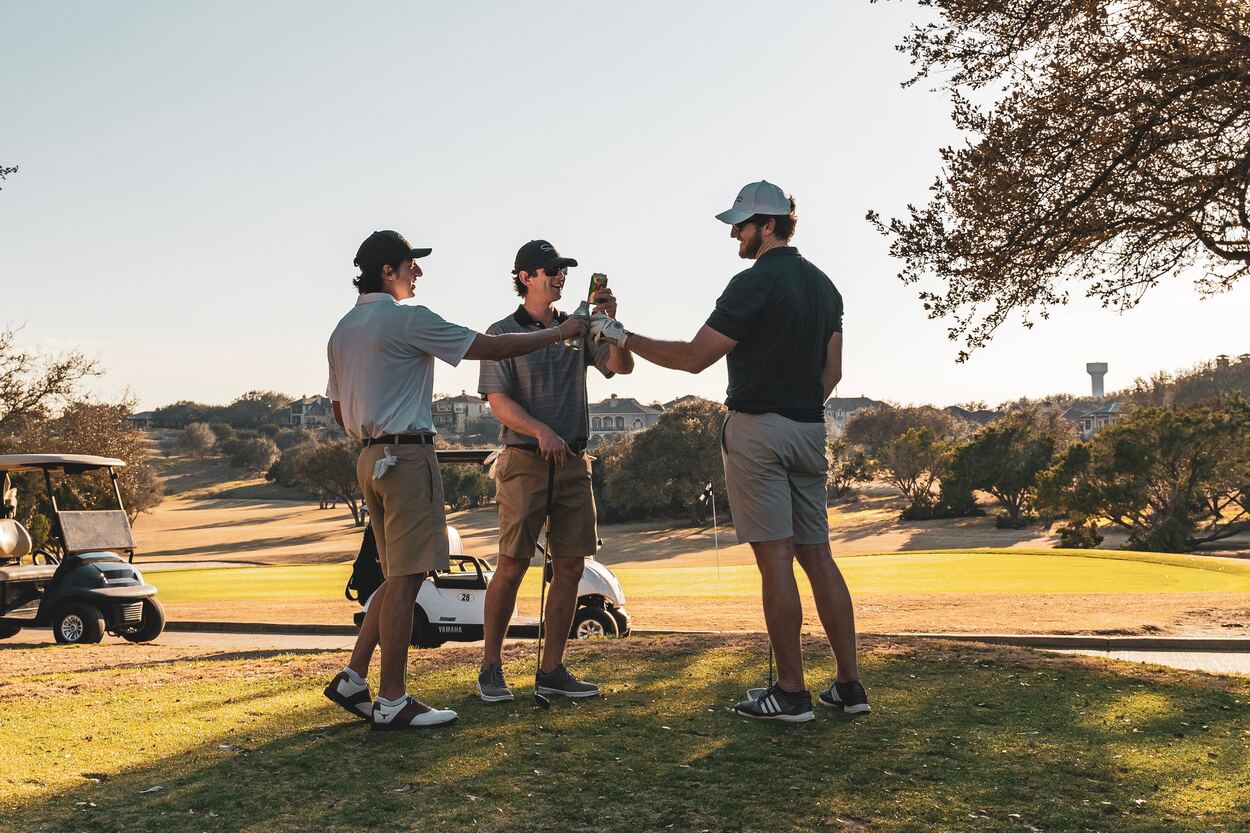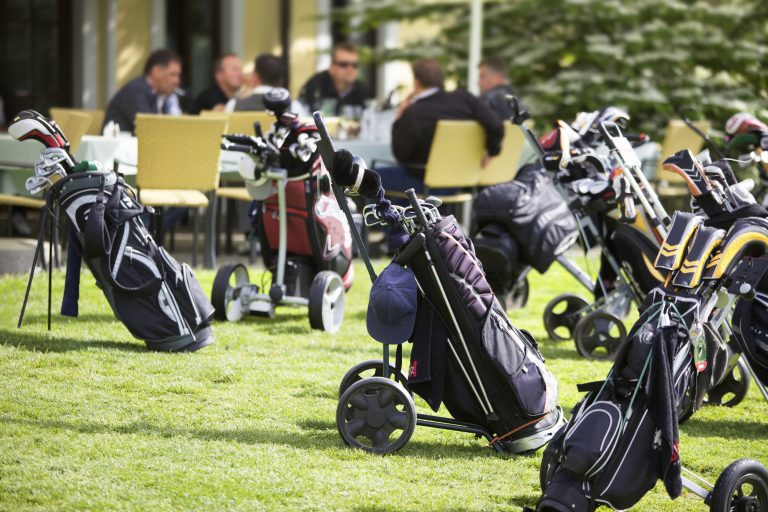How Many Golfers Die From Lightning? ( Exclusive )
Golfers are seemingly a magnet for lightning strikes. You might be one of the few curious minds who asks how many golfers die from lightning.
The game is most popular in some places with the most thunderstorms, and then there’s the part about holding up metal shafts in the middle of open fields, and if golfers are hitting the ball in the fairway like they should be, they are the tallest target around for lightning.
That said, how big of a problem is lightning for golfers? Do many die from getting struck?
Less than one golfer dies from lightning-related injuries while on the golf course. There is no official statistic tracking this occurrence, as it is scarce.
It’s no different on the golf course. While lightning strikes and consequent fatalities have occurred, it is scarce and completely avoidable. Let’s dive in.

How Many Golfers Die from Lightning?
There isn’t an official database of golfers who get struck and killed by lightning. Therefore, it’s impossible to know exactly how many times it hasn’t happened, especially back in the days when most news stayed local.
Some recent unofficial counts give an indication of just how rare such occurrences are.
In June 2021, a 71-year-old man in Pennsylvania was struck by lightning and died from the event. It was reported that the man who passed away was just the 12th lightning casualty on the golf course in 15 years.
That sample provides a less than one per-year rate of golfer fatalities due to lightning strikes. A Golf Digest article suggests that nearly 25 million people golf in the United States each year, so your odds of dying by a lightning strike out on the golf course are less than one in 25 million.

of Callaway ERC Triple
Track Golf Balls for
yourself or your buddy!
Do Victims Die While Playing or While Seeking Shelter?
Not all 12 golfers who died from lightning strikes between 2006 and 2021 died while golfing out in the open.
Three were trying to shelter in spots that weren’t exactly safe. That’s what happened with the last fatality in Pennsylvania last year.
The other nine were actively playing, undeterred by the conditions. This data point suggests, more than anything, the importance of getting out of the open when lightning begins to strike.
It also shows that true shelter, rather than trees, should be sought to stay safe.
Have There Been Famous Incidents with Lightning Striking at Professional Events?
PGA’s most famous lightning incident occurred at the 1975 Western Open in Illinois. Five professional golfers were struck by lightning while waiting during a rain delay.
After the fact, two of the five, Lee Trevino and Jerry Heard, required surgery for their injuries. The five men were all lucky to avoid a worse fate.
Lightning strikes have proven fatal for spectators at professional golf events. At the 1991 US Open in Minnesota, a spectator died from being struck by lightning.
In this case, as with those who have killed amateur golfers who were seeking shelter, a not-too-enclosed covering proved unsafe.

and apparel.
gear, accessories and apparel. (affiliate link)
How Can Golfers Avoid Being Struck by Lightning
Ultimately, golfers are responsible for themselves out on the golf course. However, golf courses themselves should do their best to keep golfers from staying out on the course when lightning is in the area.
Do you need exercise recommendations? Read my other article: Do Golfers Need to be Fit?
They should watch the weather radar and make golfers with tee times aware when there is going to be a storm in the area.
Some golf courses have thought thoroughly about protocol with lightning and utilize sound systems to call the golfers in when things get sketchy.
They should inform golfers through signage and messaging that trees and other unenclosed coverings will not keep golfers safe from getting struck.
As for golfers, there’s a simple rule to live by.
It refers to lightning and thunder, respectively, and states, “If you can see it, flee it. If you can hear it, clear it.” While lightning strikes and especially fatalities are extremely rare, golfers shouldn’t tempt fate.
They should monitor the weather and decide not to even head out to the first tee if there is lightning. Here’s how you’ll know lightning is coming.
| Towering clouds |
| Warming air is evident in the atmosphere |
| Darks Skies |
| Thunders |
| Crisp Smell |
If they’ve already started their round, they should quickly head toward the clubhouse if they see lightning or hear thunder.
Golfing is expensive, and golfers naturally resist losing their opportunity to play.
However, they should practice caution and realize that the golf course will likely work with them as they try to stay safe.
If lightning is highly near and heading to the clubhouse seems risky, golfers should head towards densely wooded areas and stay low.
A common thought is to stand under a giant tree. In reality, isolated trees are frequently struck by lightning and would be one of the last places anyone would want to be.
A famous Scottish soccer player, John White, was sheltering under a big tree on a golf course when the tree was struck, and he was killed at the age of 27.
Do Golf Clubs Conduct Electricity?
All modern golf clubs conduct electricity; golfers shouldn’t touch their golf clubs or any other item that conducts electricity during a lightning storm.
There’s a common myth that the golf cart will offer protection because its wheels are rubber. This is not the case.
If golfers are far away from the clubhouse when lightning strikes, it would be wise to make their way on foot to a wholly covered building, avoiding open space as they go.
What sport gets struck by lightning strikes the most?
You’re mistaken if you already think that golf is the sport that gets struck by lightning strikes the most. Fishing seems to be first on the list. This is because it’s near the waters.
According to this article, any body of water makes you prone to experience lightning. If you are in the ocean, the salt in it separates into positively and negatively charged ions, and this becomes the cause of the conduction of electricity.

Who is at the most significant risk for lightning strikes?
- Adults Aged 65 years old and up
- Athletes
- Outdoor Workers / Outgoing persons
- Pregnant, infants and children
Final Thoughts
Golfing in inclement weather is OK to do. But you must do it safely.
I equate golfing with the weather, similar to swimming. You would not want to be in a pool when it is outside, so if you see or hear lightning, it may be best to find shelter until it blows over.
The chances of you being struck are slim, but isn’t anything over 1% too much for a game we play for fun? I think so.
Stay safe out there!
Read my other article: Are Golf Clubs Recyclable? (Save Some Money)



